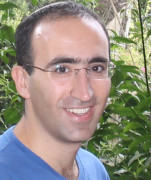MedicalResearch.com Interview with:
Winfried Meissner, M.D.
Dep. of Anesthesiology and Intensive Care
Jena University Hospital
University Hospital Jena, Germany
Medical Research: What is the background for this study?
Dr. Meissner: Post-operative pain is managed inadequately worldwide. There are probably many reasons for this, one of which may be lack of evidence about outcomes of treatment in the clinical routine.
PAIN OUT was established as a multi-national research network and quality improvement project offering healthcare providers validated tools to collect data about pain-related patient reported outcomes and management after surgery. Patients fill in a questionnaire asking for pain intensity, pain interference and side effects of pain management. The questionnaire has now been translated into 20 languages. Data are collected electronically and clinicians are provided with feedback about management of their own patients, compared to similar patients in other hospitals. Furthermore, the findings are used for outcomes and comparative effectiveness research. PAIN OUT is unique in that outcomes of postoperative pain management can be examined internationally.
PAIN OUT was created in 2009 with funds from the European Commission, within the FP7 framework and has now been implemented in hospitals in Europe, USA, Africa and SE Asia. The findings allow us to gain insights as to how pain in managed in different settings and countries.
For this particular study, we compared management of pain in the US to other countries. We assessed a large group of patients who underwent different types of orthopedic surgery and compared their patient reported outcomes and management regimens. We included 1011 patients from 4 hospitals in the USA and 28,510 patients from 45 hospitals in 14 countries (“INTERNATIONAL”).
Medical Research: What are the main findings?
Dr. Meissner: Postoperative pain intensity of US patients was higher than in INTERNATIONAL patients; they felt more often negatively affected by pain-associated anxiety and helplessness, and more US patients stated they wished to have received more pain treatment. However, other patient-reported outcomes like time in severe pain or the level of pain relief did not differ.
We found that treatment regiments of American patients differed compared to INTERNATIONAL patients. More US patients received
opioids, and their opioid doses were higher compared to INTERNATIONAL patients. In contrast, INTERNATIONAL countries use more nonopioid medications intraoperatively and postoperatively. Thus, under-supply with opioids cannot explain our findings.
Mean BMI of US patients was 30.3 while for INTERNATIONAL it was 27.4. However, insufficient evidence exists that this finding might account for differences in pain intensity.
Routine pain assessment was performed in almost all US patients, in contrast to about 75% in the INTERNATIONAL group. Obviously, routine pain assessment, as practiced in the United States, fails to result in lower postoperative pain. Perhaps it has the opposite effect by directing patients’ attention to the pain.
(more…)


















